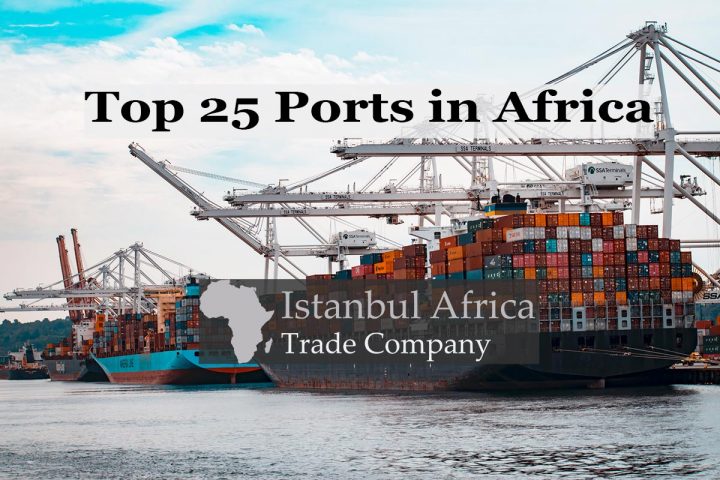1. Port of Durban, South Africa (ZADUR)
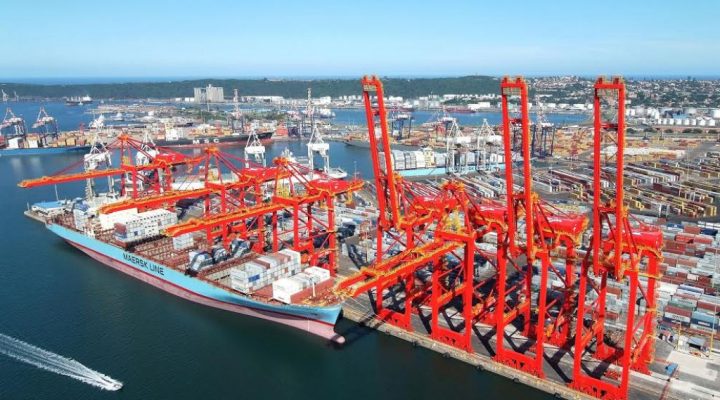
The port of Durban is located on the east part of South Africa. The port of Durban has the following port units: Transnet Port Terminals – Durban Container Terminal, Pier 1 Container Terminal, Multi-Purpose Terminal, Durban Car Terminal and Maydon Wharf Terminal.
Durban Container Terminal the largest container terminal in the southern hemisphere. 60% of the total number of containers handled at all South African ports is passing through Durban Port. Port of Durban is an important hub for the entire Southern African region, connecting it to the Far East, Middle East, Australasia, South America, North America and Europe. The Port of Durban is the biggest container port in Africa in terms of capacity. It is South Africa’s main port for containers. The average number of containers using this port is 84 each month. It handles about 1.55 million containers every year. The type of containers it serves is general-purpose containers, reefers, abnormal containers and tanktainers.
The port of Durban is the busiest port in Africa. In 2019, the port of Durban handled 3253 ships with a gross tonnage of 122 million gross tons. The port handled 81 million tons of cargo.
2. Port of Cape Town, South Africa (ZACPT)
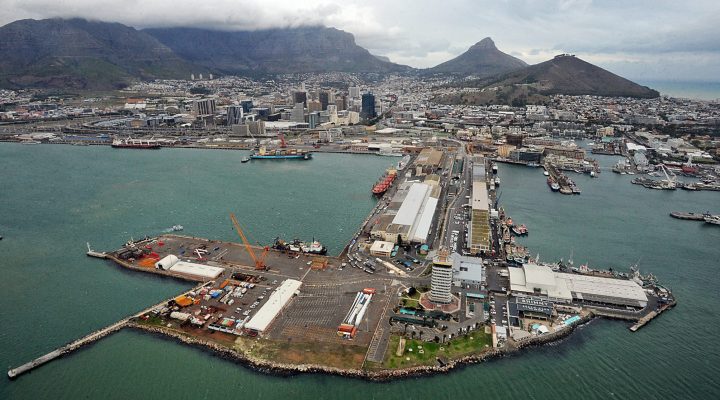
Cape Town is the second busiest port in South Africa, after Durban. It handles the largest amount of fresh fruit and vegetables. The Port of Cape Town is located a globally busy trade route, the Port of Cape Town holds a position of strategic and economic importance for South Africa. The port serves as a transshipment destination as well. The Port of Cape Town has maintenance and repair facilities.
In 2009, the Port of Cape Town served to more than 3000 ships carrying a total of 13 million tons of cargo. The container traffic was about 10 million tons in 774 thousand TEUs.
The Port of Cape Town’s Container Terminal consists of water berths. Cape Town’s Container Terminal handled 926 thousand TEUs in 2016.
3. Port of Abidjan, Ivory Coast (CIABJ)
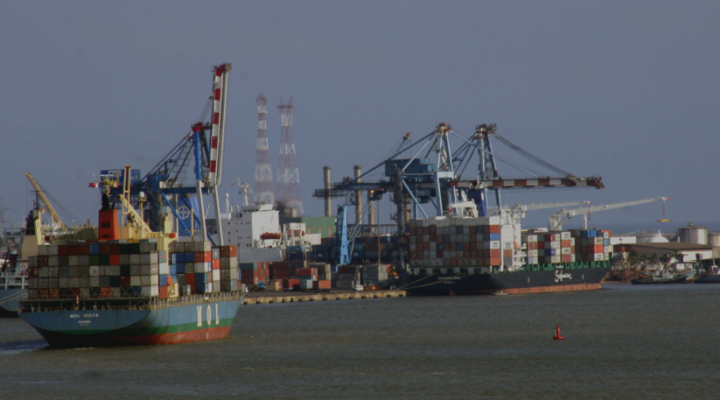
The Port of Abidjan is located in Ivory Coast and it is West Africa’s biggest port. The port is used as a point for transshipments to West and Central Africa with the railroad system in Cote d’Ivoire. After the operations of Vridi Canal, the Port of Abidjan has handled most of the commercial trade for the Cote d’Ivoire.
The Port of Abidjan has facilities of warehouses for different types of commodities. The port handles the cocoa trade as Cote d’Ivoire is the third largest cocoa bean exporter globally. Imported goods in the port include foodstuffs, machinery, equipment, pharmaceuticals, and manufactured goods. Exports are rubber, cotton, timber, fruit, fish, vegetables and cocoa.
4. Port of Apapa, Nigeria (NGAPP)
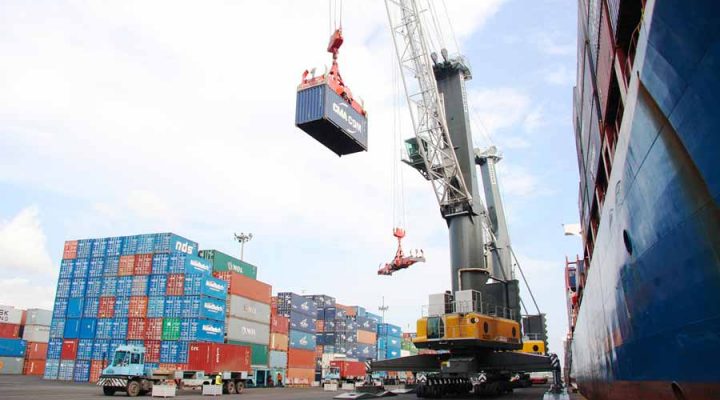
The Port of Apapa is the port for the City of Lagos in Nigeria. Lagos Port has three major areas, Lagos, Apapa and Tin Can Island. The Port of Apapa is regulated by The Nigerian Ports Authority.
The Port of Apapa Container Terminal is built on 44 hectares and the port can handle up to 22 thousand TEUs of containerized cargo. Port of Apapa Container Terminal has six berths and also contains 6.5 thousand sqm covered storage. The container yard can handle 19.5 thousand TEUs, and it contains 298 reefer plugs.
5. Port Djibouti, Republic of Djibouti (DJJIB)
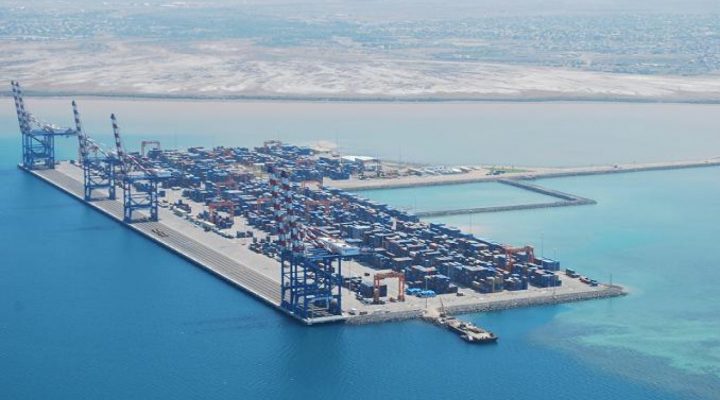
The Port of Djibouti is a port in Djibouti City, in Republic of Djibouti. The port links Europe, the Far East, the Horn of Africa and the Persian Gulf. The port is located on the south shores of the Gulf of Tadjoura off the Gulf of Aden.
The Port of Djibouti has 18 berths with a total quay length of 2830 meters. The general cargo facility has eight berths. The Container Terminal contains two berths. The Oil Terminal has two berths with alongside depth of 18 meters.
6. Port of Dar es Salaam, Tanzania (TZDAR)
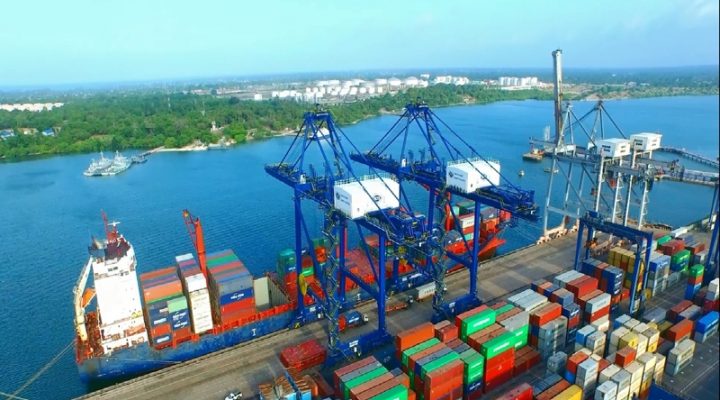
Dar es Salaam port is the most important port in Tanzania. It has a rated capacity of 4 million (dwt) dry cargo and 6 million (dwt) bulk liquid cargo. 95% of the Tanzania’s international trade is handled at the port. The port also serves to Malawi, Zambia, Democratic Republic of Congo, Burundi, Rwanda and Uganda.
Dar es Salaam is Tanzania’s major city with industries and seat of government. The Port of Dar es Salaam is the main export location for most of the country’s agricultural and mineral exports.
7. Port of Beira, Mozambique (MZBEW)
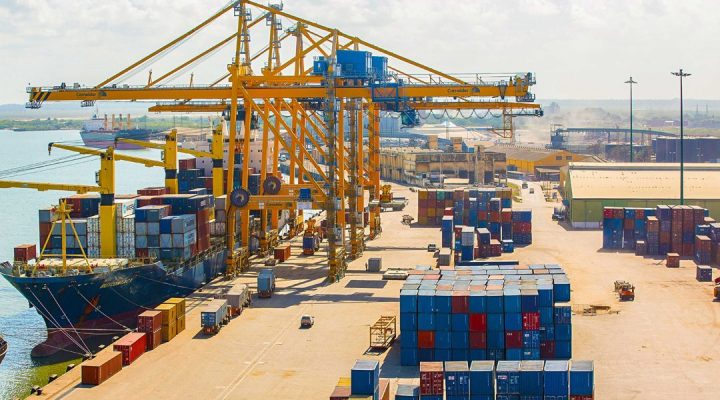
The Port of Beira is located on the northern part of the Mozambique Channel. Central African products are exported through Port of Beira. Thanks to the railways from Zimbabwe, Congo, Zambia and Malawi that end in the Port of Beira, it serves as the main port for inland nations.
Beira is the third largest in Mozambique. The container terminal has 4 berths with a total length of 645 metres. The terminal has a projected capacity of 400,000 TEUs per year.
8. Port of Walvis Bay, Namibia (NAWVB)
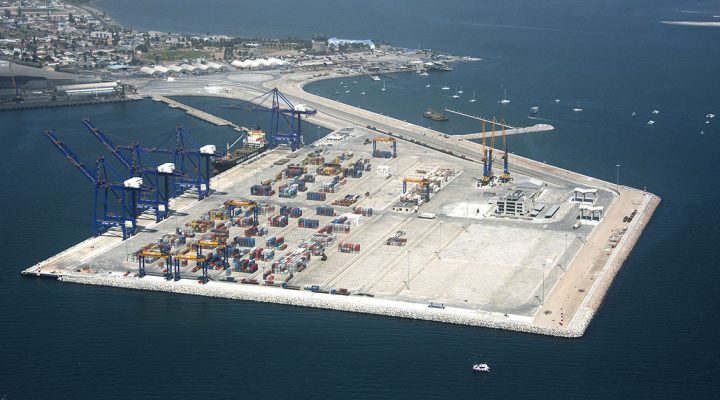
Located half way down the coast of Namibia, Walvis Bay is an important port for international trade. It has direct access to major shipping routes. The Port Walvis Bay is the largest commercial port in Namibia and it receives approximately three thousand vessels annually. The port handles 5 million tons of cargo.
The Port of Walvis Bay is equipped with world-class infrastructure and reliable machinery. Cargos are handled in a reliable and secure way. The Port of Walvis Bay handles containers, transshipments, and bulk of commodities.
Namport, the operator of Walvis Bay, constructed a new container terminal. It increased the handling capacity from 350 thousand TEU to 750 thousand TEU.
9. Port Said, Egypt (EGPSD)
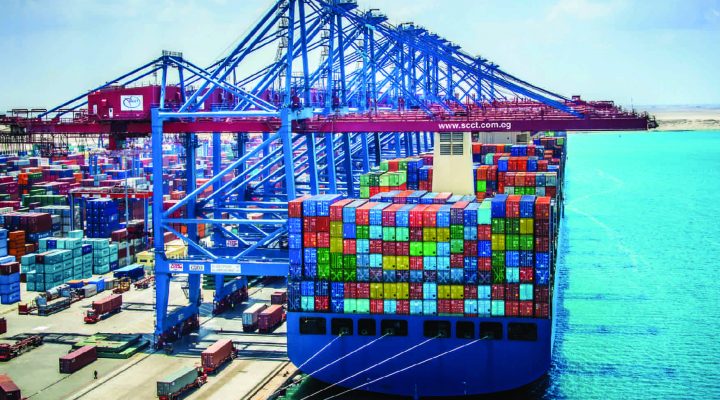
The Port Said Port Authority (PSPA) is responsible for the management and operations of the port. Port Said includes Port Said West, El Arish Port and Port Said East. The port is installed with state-of-the-art technologies.
Port Said handles approximately 15 million tons of cargo every year on vessels with 13 meters draft. Port Said contains a Dry Bulk Terminal with combined silos and warehouses, which can store about two million tons. The Container Terminal has 8 berths. The terminal’s capacity is 700,000 TEUs. There are also reefers and refrigerated containers. The General Cargo Terminal has 7 berths.
10. Port of Tanger Med, Morocco (MAPTM)
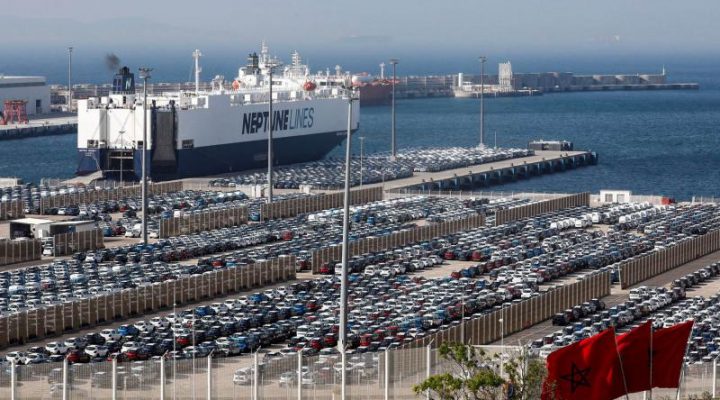
Tanger Med is the biggest port in North Africa. The Tangiers Port port is located on the Strait of Gibraltar about 40 km east of Tangier, Morocco. It had an annual volume of 3.5 million TEUs in 2018. The port will add six million in capacity after its extension worth of 1.3 billion Euros. After the development, the port will reach volumes of 4.5 million TEU by 2020. It is ranked 18th port in the world.
11. Port of Tema, Ghana (GHTEM)
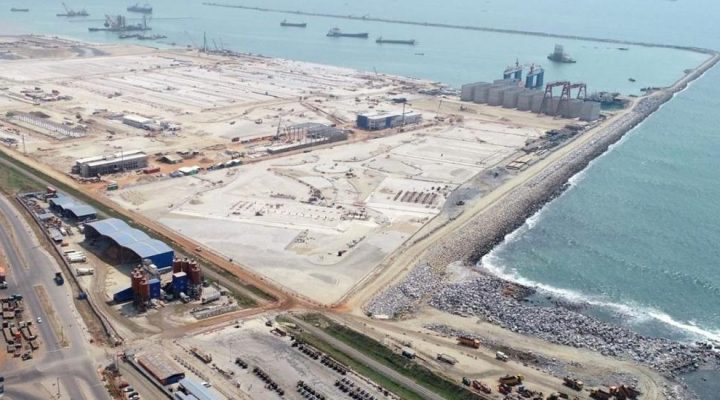
The Tema Harbour is very close to Accra, Ghana. The harbour is located in the southeastern part of Ghana, along the Gulf of Guinea. The Port of Tema is a member of the International Association of Ports and Harbours (IAPH). There is also Port of Accra (GHACC) that is very close to Port of Tema.
The Port of Tema it is the largest seaport in Ghana. It has rail and road links to Accra and this make it Ghana’s biggest and most important port. The Ghana Ports and Harbour Authority is responsible for the management of Port of Tema facilities. The Port of Tema handles 80% of the nation’s international cargo. In 2006, the Port of Tema handled 8.1 million tons of import and export products. The Port of Tema has five container terminals that receive, store and deliver containerized cargos.
12. Port of Dakar, Senegal (SNDKR)
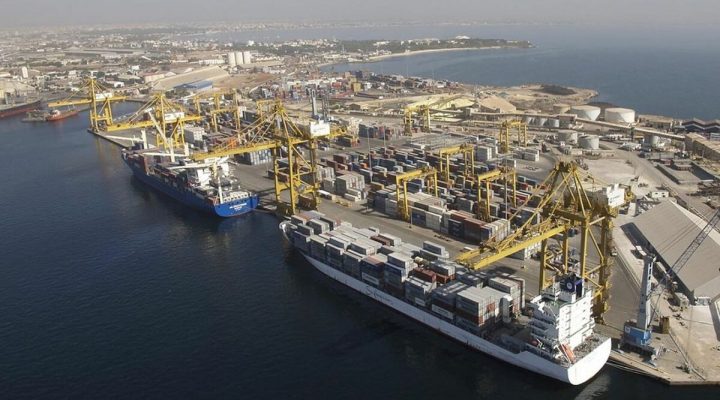
The Port Autonome de Dakar manages the Port of Dakar. The port is located in the capital city of Senegal. The Port of Dakar was visited by around 2,500 vessels in 2007. In 2007, the Port of Dakar handled over 8 million tons of cargo.
The most transported items in the port are: refined hydrocarbons, crude oil, phosphoric acid, oil, gas, sugar cane, bitumen, caustic soda, chemical products, wine, clinker, sulfur, coal, attapulgite, rice, fertilizer, corn, urea, gypsum and crabs. The total amount of containerized cargo is 425 TEUs.
13. Port of Douala, Cameroon (CMDLA)
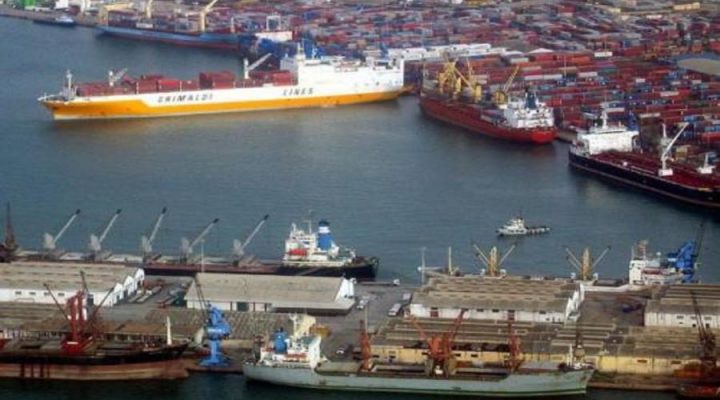
The Port of Douala is located in the city of Douala in Cameroon. It contains 11 cargo berths. The port also has 380 thousand sqm of open storage and 8 thousand sqm of storage space for chilled and refrigerated cargoes.
The Port of Douala has 2,300 meters of quay. The Container Terminal has 3 berths and it has capacity for 5 thousand TEUs.
14. Port of Luanda, Angola (AOLAD)
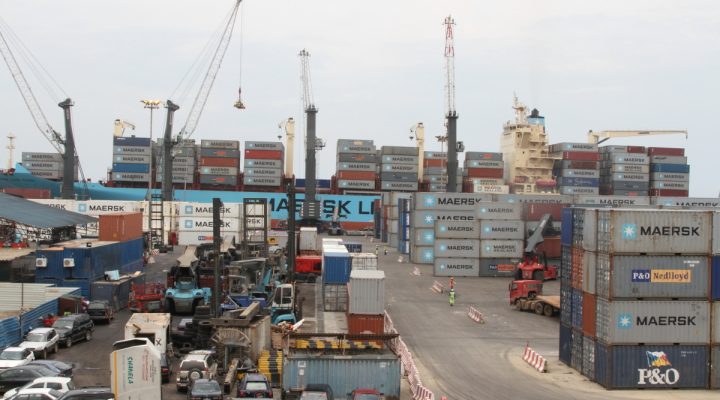
Porto de Luanda is a busy seaport in Angola. The industrialization in the city heavily depends on the port. Main exports are petroleum, diamonds, fish products and iron ore. Imports are iron and steel, coal, machinery and flour.
Porto de Luanda has 4 terminals. There are 5 cargo berths with 180 meters long, and the port is connected to the national railroad.
15. Port of Pointe-Noire, Congo (CGPNR)
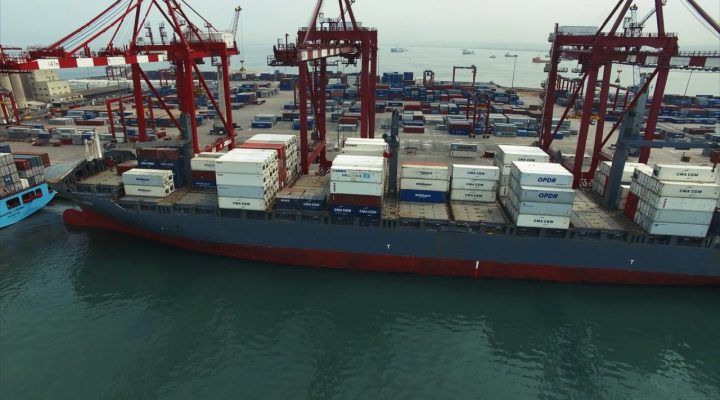
The main activity of Congo Terminal is the container-ships and RORO ships. The port is operated by Bolloré. The investment program cost 570 Millions of Euros. New information systems and quays are deployed.
The Congo Terminal became a transhipment platform within central Africa and the entrance of Congo basin door. Congo Terminal is part of the 13 container terminals and 7 ro-ro terminals of Bolloré.
16. Port Sudan, Sudan (SDPZU)
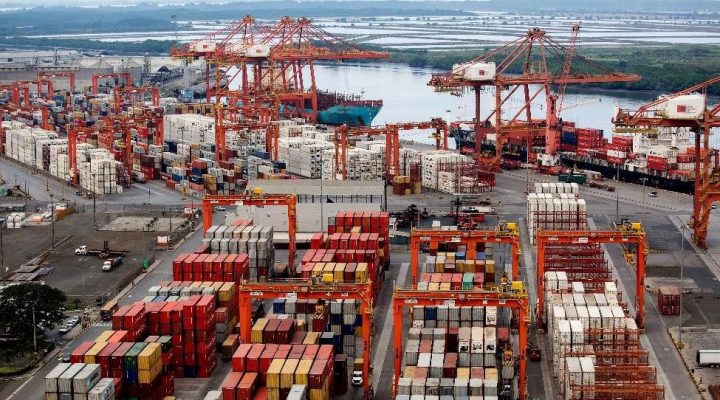
The Sea Ports Corporation (SPC) manages Port Sudan. In 2007, Port Sudan handled a total of almost 8 million tons of cargo. Port Sudan handled 2 million TEUs of containerized cargo. Main cargo items are cotton, oilseed, senna, gum Arabic, hides and skins. Its major imports are fuel oil, machinery, construction materials and vehicles.
The North quays have 11 berths. This part handles primarily general cargo. The Port Sudan South Quays has 4 berths. It handles containers, petroleum and bulk grains.
17. Port of Algiers, Algeria (DZALG)
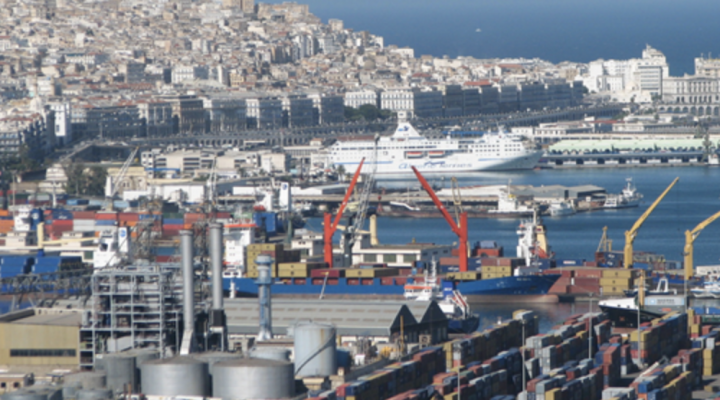
The Port of Algiers is located in the capital of Algeria. In 2004, almost 1.8 million people lived near the Port of Algiers. The Port of Algiers is one of the most important seaports in North Africa, and it is an important economic, financial, and commercial center for Algeria. Most transporter items are raw materials, industrial products, and supplies. They export wine, oranges, vegetables, phosphates and iron ore.
The Port of Algiers has a newly-constructed container terminal with capacity for over 250 TEUs of containerized cargo.
18. Port of Tripoli, Libya (LBKYE)
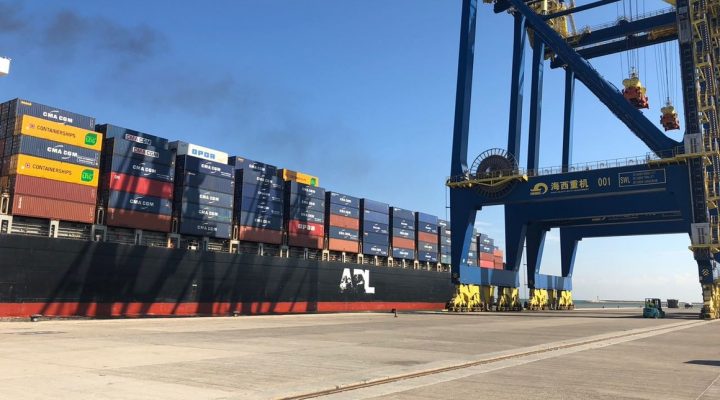
The Socialist Ports Company is the port authority responsible for the management of the Port of Tripoli. The port mainly handles general and bulk cargoes and passengers.
The port harbor covers about 300 hectares. The port is visited by 600 ships every year. The port can accommodate ships to 190 meters long with draft of 11 meters.
19. Port of Libreville, Ghabon (GALBV)
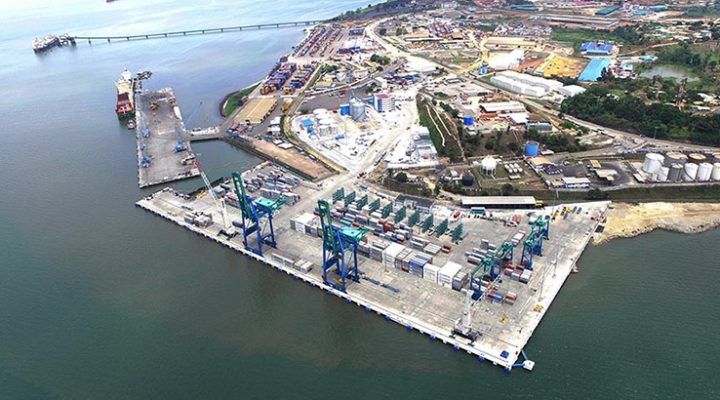
Port of Libreville is in Gabon. The Owendo container terminal is in international standards thank to the equipment and properties of the wharf. The port has competitive services for traders. The container capacity reaches to 6,000 TEUs annually.
20. Port of Matadi, DRC (CDMAT)
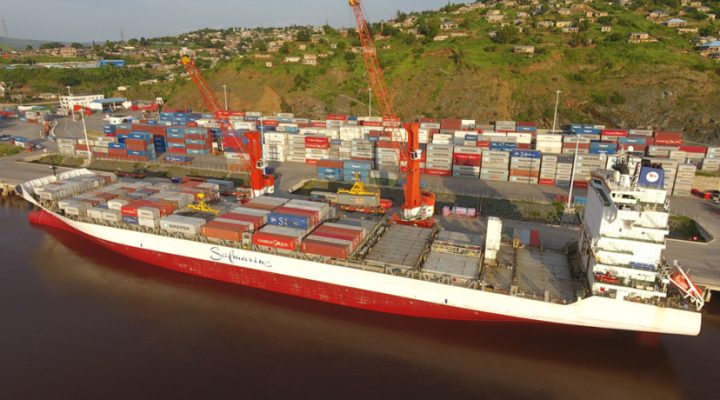
Matadi Port is the most important port of DRC with 90% of maritime traffic. It handles 2.5 million tons of cargo every year. Matadi port is connected to Kinshasa by railways. The port has 10 quays.
The Matadi Port has recently operated two new cranes of 40T, and increased its ability to offer service for container ships. It can store 6,500 TEUs.
21. Port of Mogadishu, Somalia (SOMGQ)
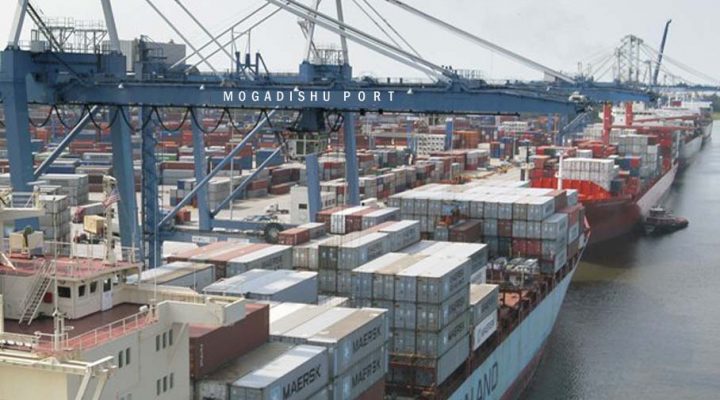
The Port of Mogadishu is the official seaport of Mogadishu, the capital of Somalia. It is classified as a major class port. The port has the following facilities: Dedicated CFS area, Import Yard Areas divided to four stacks, Empty Container areas seperated for each shipping lines, Warehouses, Reefer Yard Area, Workshop, Administration Building, Port Control, General Cargo, Container and Ro/Ro Piers. The Terminal serves to 15 container vessels each month.
22. Port of Conakry, Guinea (GNCKY)
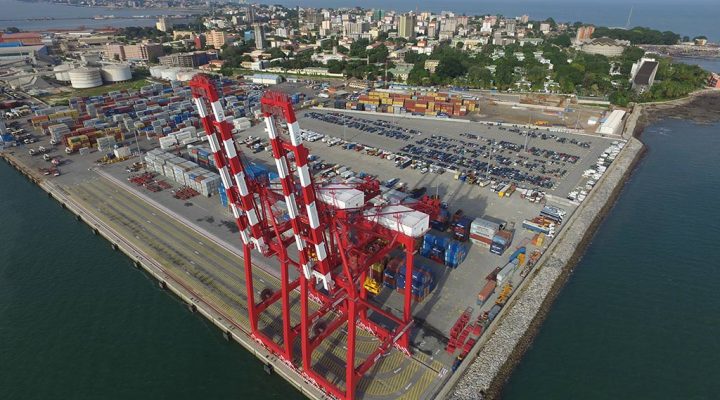
In 2011, Bolloré was awarded a 25-year concession for the container terminal at the port of Conakry. The other terminals are operated by Conakry Port S.A., Compagnie de Bauxites Kindia CBK and Rusal Frigua.
The channel draft is 13 meters. The capacity of the Conakry Terminal is 8,000 TEU and 2,000 vehicles.
23. Port of Freetown, Sierra Leone (SLFNA)
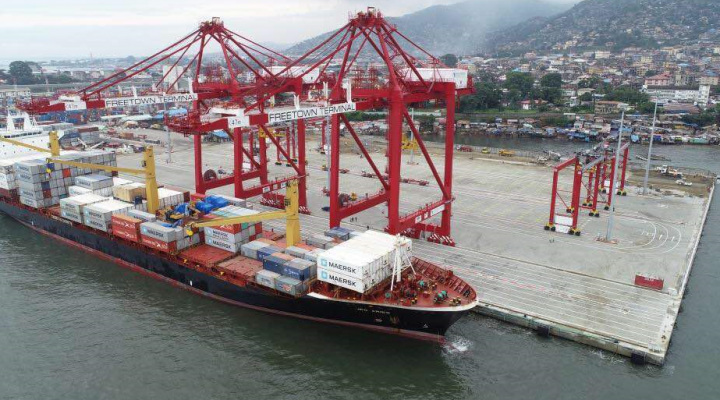
The Port of Freetown is located in Sierra Leona and it is the principal commercial port. The port is a major logistics hub for Sierra Leone’s imports and exports. Freetown Port has has a well-protected anchorage, a draft at berth of 10 meters, a length of quay of 1,060 meters.
A concession agreement was signed in 2010 between the Sierra Leone Port Authority, the Government, and the National Commission for Privatization, Bolloré Ports and the Freetown Terminal Limited. Six vessels can be berthed and operated at the same time. Bolloré plans to renovate and modernize the container terminal, which now employs hundreds of people at the terminal.
24. Port of Lome, Togo (TGLFW)

The port of Lomé is the only port on the West-African coast from which several cities can be reached by road within one day. Goods can be moved within reasonable time at competitive costs.
Lomé has been recognized by ECOWAS as a Free Trade Zone. Today, the port of Lomé handles 80% of the trade flow in Togo. The port serves to landlocked countries such as Burkina Faso, Mali and Niger. If The Port of Lomé currently handles over 15 million MT in 2015.
25. Port of Alexandria, Egypt (EGALY)
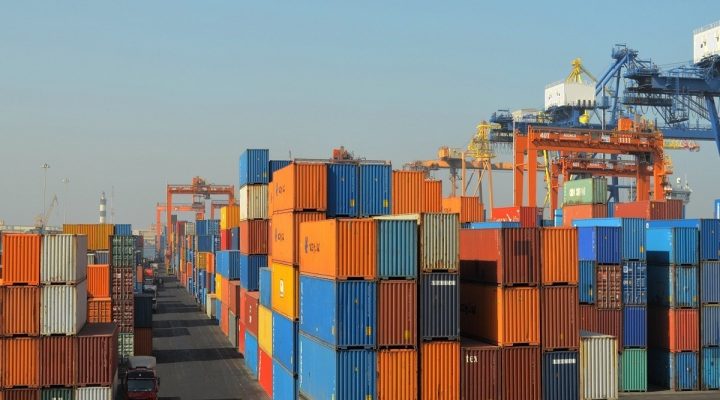
The Port of Alexandria has two harbours. The West harbour is used for commercial shipping and trade. In 2008, more than 5,000 vessels visited the Port of Alexandria.
There are six major zones at the Port of Alexandria consists of six major zones. These zones are used for general cargo, storage yard, covered storage building, roll-on/roll-off cargoes, stuffed bulk cargoes, barges and passengers.

